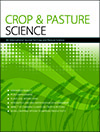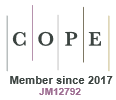CP23117Cropping calendar, agroclimatic and agroecological zoning for rainfed maize (Zea mays L.) under different rainfall scenarios in a semi-arid region of Brazil
 , Bruno Ricardo Silva Costa, Rafaela da Silva Arruda and Fernando Ferrari Putti
, Bruno Ricardo Silva Costa, Rafaela da Silva Arruda and Fernando Ferrari Putti
This study aimed to define the optimum cropping calendar and the agroclimatic and agroecological zones for rainfed maize (Zea mays L.) across Ceará state, situated within the Brazilian semi-arid region, assuming different rainfall scenarios: dry, regular, and rainy. The agroclimatic zoning was defined trough the crop water balance results. Our findings demonstrated that rainfed maize cultivated under the semi-arid climate of Ceará state is viable in rainy conditions, partially restricted in regular years, and not recommended in dry years.




